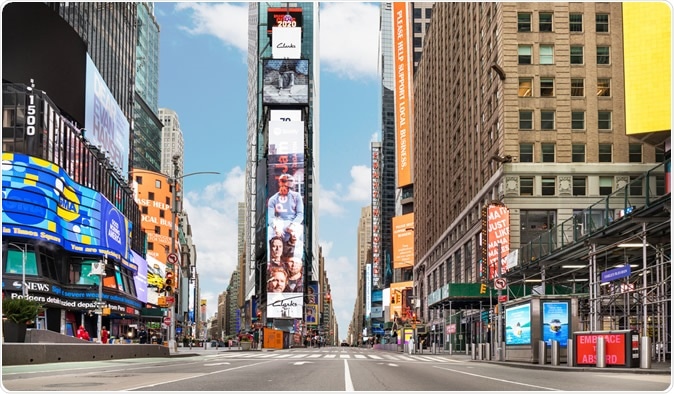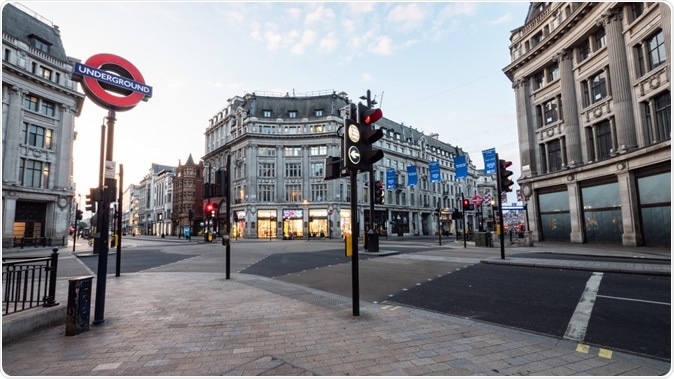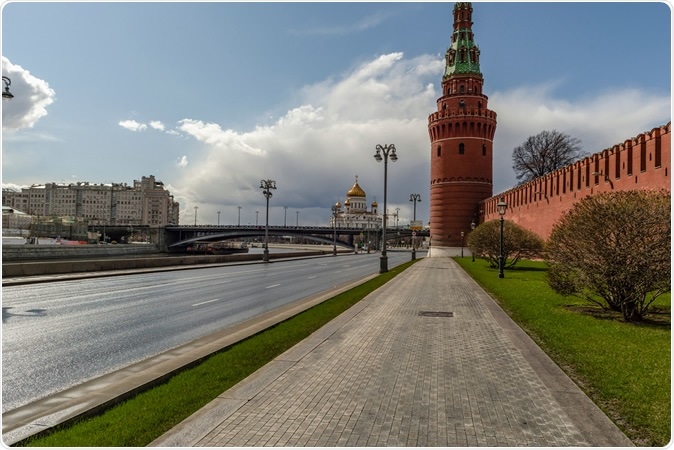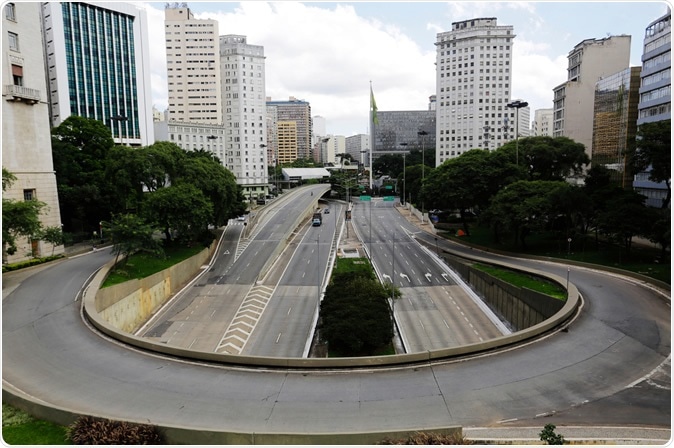The pandemic spreading over the world has affected over 185 countries and territories so far, with over 2 million cases and 134,354 deaths. In response, many countries and regions have enforced lockdowns, in addition to the almost universal recommendations for social distancing. One of the most significant impacts has been the effect on economic activity the world over.
Development must mean pollution
Many developing countries have found that economic activity and financial growth are inextricably linked to the use of fossil fuels, resulting in increased greenhouse gases, particulate matter, and, therefore, increased air pollution.
Air pollution has severe adverse consequences on human health and the environment. Research shows that an estimated 9 million deaths occur prematurely every year due to the presence of fine particulate matter less than 2.5 micrometers (PM2.5). Meanwhile, Nitrogen Dioxide (NO2) causes 4 million new cases of asthma to emerge in children each year.
Lockdown reduces air pollution
The study was based on the hypothesis that lockdowns are linked to lower levels of air pollution during February and March 2020. Satellites imagery provided data on the global air pollution levels, and ground measurements were derived from 10,000 air quality stations, adjusting for variations in local and global weather conditions.
The changes in various air pollutants over time were then examined with relation to the reduction, if any, in the number of premature deaths and new cases of childhood asthma compared to the expected incidence.

Manhattan, New York, USA - March 28, 2020: No crowds in Times Square after self-quarantine and social distancing was put in place in New York City. Image Credit: haeryung stock images / Shutterstock

LONDON, UK - 22 MAY 2018: Empty London. Oxford Circus with no traffic or pedestrians. The busy shopping district is normally gridlocked with human traffic. Image Credit: pxl.store / Shutterstock

Moscow, Russia, April 5, 2020. Coronavirus Quarantine, COVID-19, in Moscow. Empty streets in the city center. Image Credit: Dmitry Bezrukov / Shutterstock
Satellite data
When the satellite-derived data were observed, the researchers found a 10% reduction in NO2 concentrations in the troposphere over the populated parts of the world, with a 30% decline over Europe and a 12% fall over China. Ozone levels showed a slight increase of 2.4%, which they explain as due to the decline in nitrogen oxide emissions, causing reduced consumption of ozone by reaction with ozone (‘local titration of ozone’), along with the photochemical formation of ozone catalyzed by nitrogen oxides.
Nitrogen dioxide lasts for only about a day in the atmosphere, which allows local fluctuations to be seen clearly. Ozone lasts for weeks at a time, and its variations over time are affected by the weather as well. The limited amount of sunlight during the lockdown months of February and March also reduces the rate of photochemical ozone reactions in the atmosphere over the colder countries of the world. In the warmer regions of the globe, the levels of ozone may increase and accumulate to a marked extent.
The concentration of PM2.5 is mirrored by the aerosol optical depth (AOD). This also went up, though slightly, by 13%, but this is mostly above the boundary layer and does not represent the changes at ground level.

Sao Paulo, SP / Brazil - March 22, 2020: Empty streets and avenues are seen in downtown São Paulo, Brazil. Image Credit: Nelson Antoine / Shutterstock
Ground-level data
At ground level, the changes from the expected baseline in the levels of NO2, ozone, and PM2.5 were -23%, +5.4%, and -17%, respectively. The change is both greater and in the opposite direction in the case of PM2.5, when compared to the satellite-generated data, showing how important it is to take both types of data into consideration.
The reduction in NO2 and PM2.5 levels is apparent from the middle of January and increases thereafter, which, according to the researchers, could be because of the initial lockdown in Wuhan and then in Hubei province at the beginning of the pandemic, followed by increasing number of lockdowns all over the world. They also pointed out aberrations, such as much more significant reductions in Australia and Mexico. While the first may be the result of the earlier bush fires in Australia, the second, they say, is “more difficult to explain.”

8 April 2020 - Cape Town, South Africa: Aerial view over Cape Town during COVID-19 lockdown. Image Credit: fivepointsix / Shutterstock
How are these deviations linked to the lockdown and the health outcomes?
The next step was to analyze only the ground-level concentrations of each pollutant on a country-wide basis and for only the first 2 weeks of lockdown rather than the average in the months of February and March. The researchers adjusted for weather and local climatic conditions, which could markedly affect these parameters.
The results showed that NO2 and ozone levels went down by almost a third and a tenth, respectively. The PM2.5 levels, however, seem to be affected more by energy generation, agriculture, and residential use of power than land transport and small-scale business activity. Mineral dust blown over immense distances by the winds also seems to play a significant role in determining PM2.5, which masks the local reductions of this pollutant.
The researchers say that just two weeks of lockdown, which brought most industries and traffic to a near-complete halt, has resulted in a net reduction of 7,400 premature deaths and 6,600 cases of asthma in children in 27 countries where such measures were in force. 6,800 of the avoided deaths were due to PM2.5, 540 to NO2, and 50 to ozone reductions. For asthma in children, the corresponding reductions are 850, 5700, and 50, respectively.
When data from India and China alone are examined, the number of early deaths due to the presence of PM2.5 in the air went down by 5,300 and 1,400, respectively. These are the countries with the highest pollution levels and the greatest density of population.
It is fair to assume that if this trend were to be maintained for the whole of 2020, there would be about 0.80 million fewer early deaths and 1.6 million cases of asthma in children. The small reductions in PM2.5 would contribute to much of this benefit, at 0.6 million avoided deaths and 1.1 million avoided pediatric asthma cases.
What does the study show?
The study has several limitations due to the type of data used, namely, using city-wide or multi-city trends to generalize over a whole population. Secondly, they cannot predict if the premature deaths said to have been avoided would have happened in the period covered. The study also does not account for other exposures like smoke from indoor solid fuel stoves.
Despite this, the researchers conclude that the reduction of air pollution by reducing the emissions related to regular business activities is associated with significant potential for improvements in health outcomes. The longer total lockdown duration in most countries and the interplay between air pollution and COVID-19 deaths is yet to be known, and these estimates may, therefore, be at the lower limits of the real benefits.
Economic activity cannot, obviously, be suspended indefinitely, yet should the world return to its “business as usual” patterns that clearly drives air pollution and related deaths? While the lockdowns were intended to minimize the number of deaths from COVID-19, the resulting avoidance of premature deaths due to air pollution has been a side benefit. They conclude, “Finding economically and socially sustainable alternatives to fossil fuel-based transport and industry are another means of reaching the pollutant declines we have 235 observed during the global response to COVID-19.”
Important Notice
medRxiv publishes preliminary scientific reports that are not peer-reviewed and, therefore, not be regarded as conclusive, guide clinical practice/health-related behavior, or treated as established information.
Journal reference:
Venter, Z. S., Aunan, K., Chowdhury, S., and Lelieveld, J. (2020). COVID-19 Lockdowns Cause Global Air Pollution Declines With Implications for Public Health Risk. medRxiv preprint doi: https://doi.org/10.1101/2020.04.10.20060673